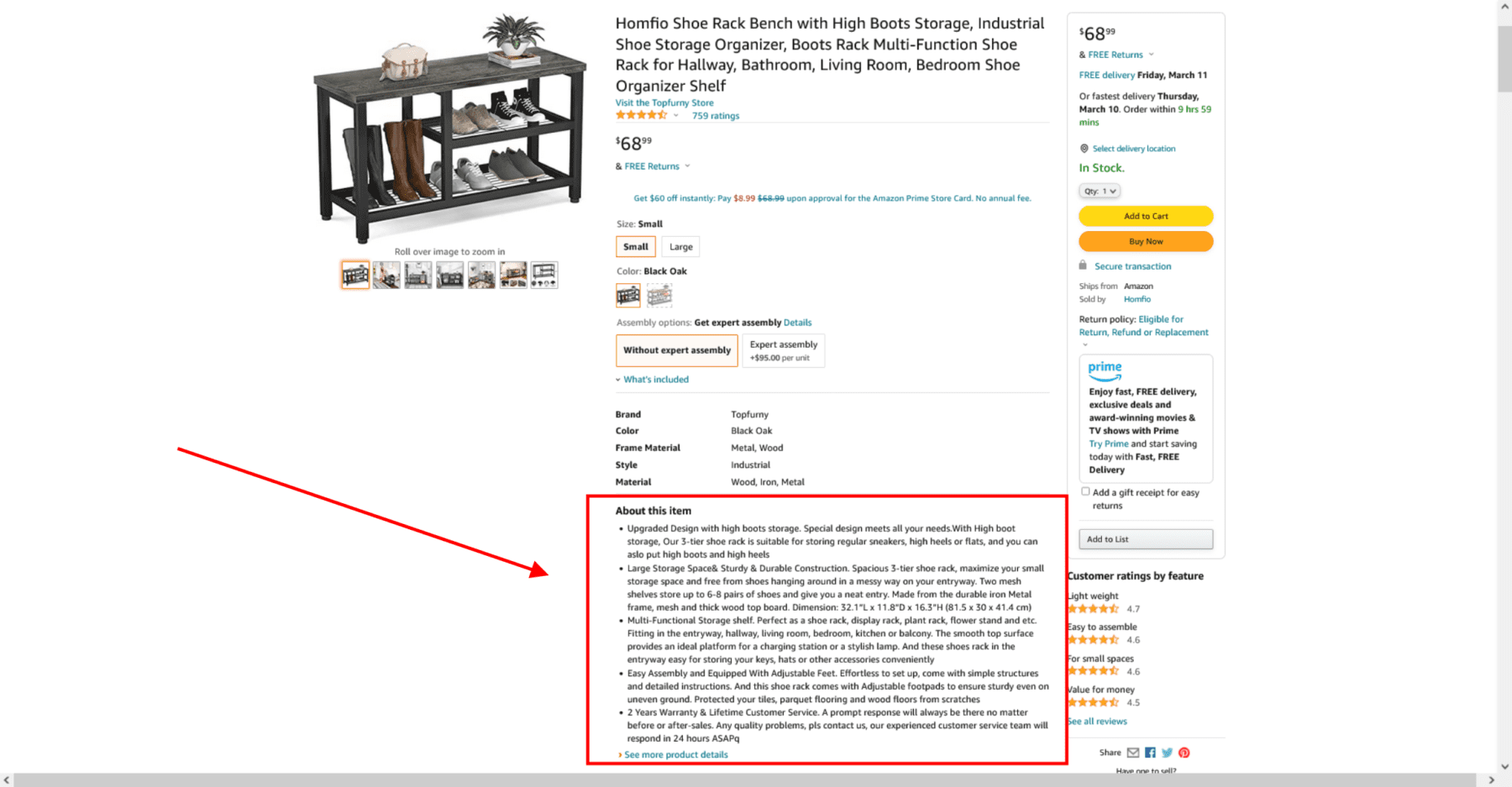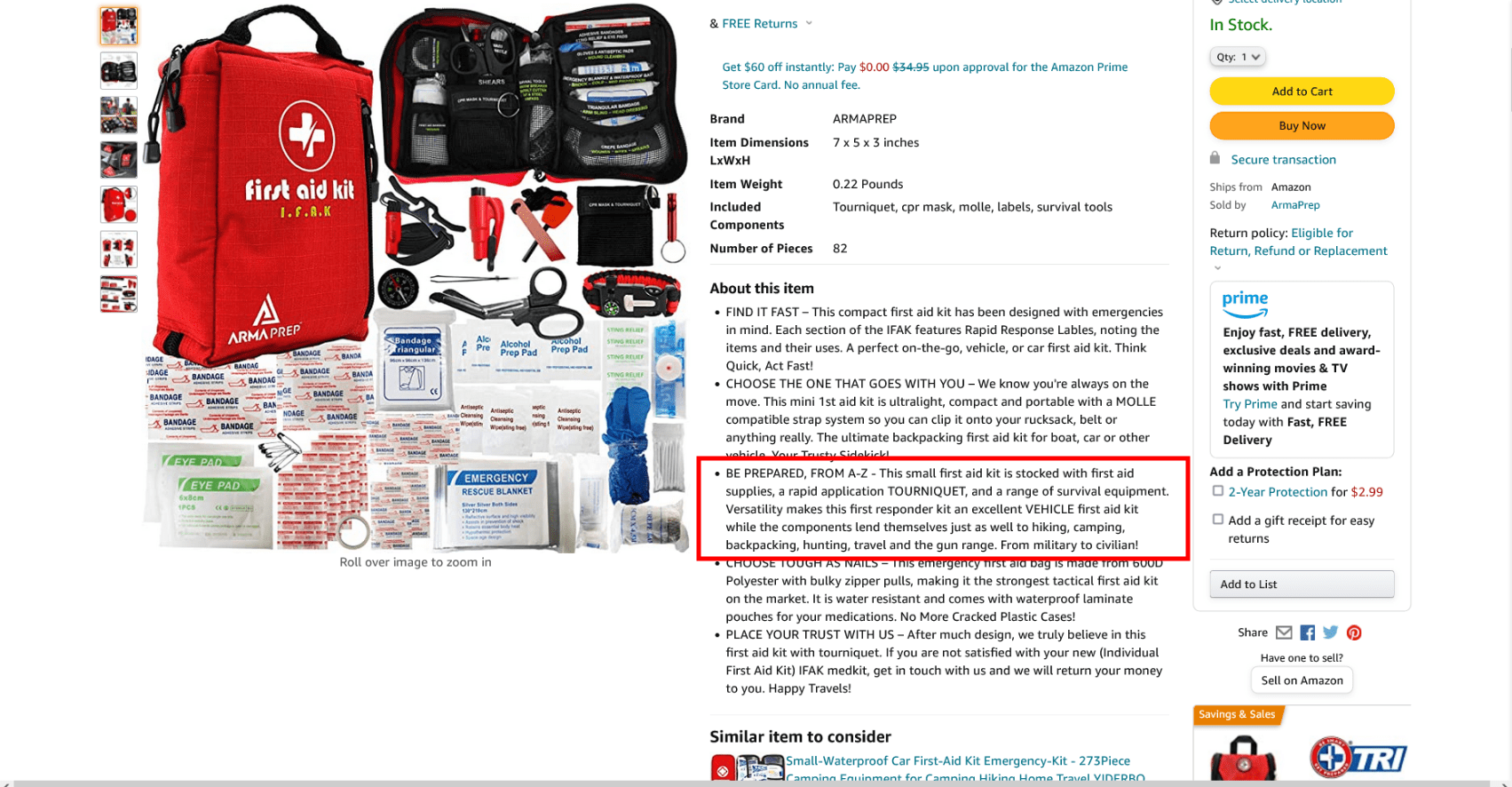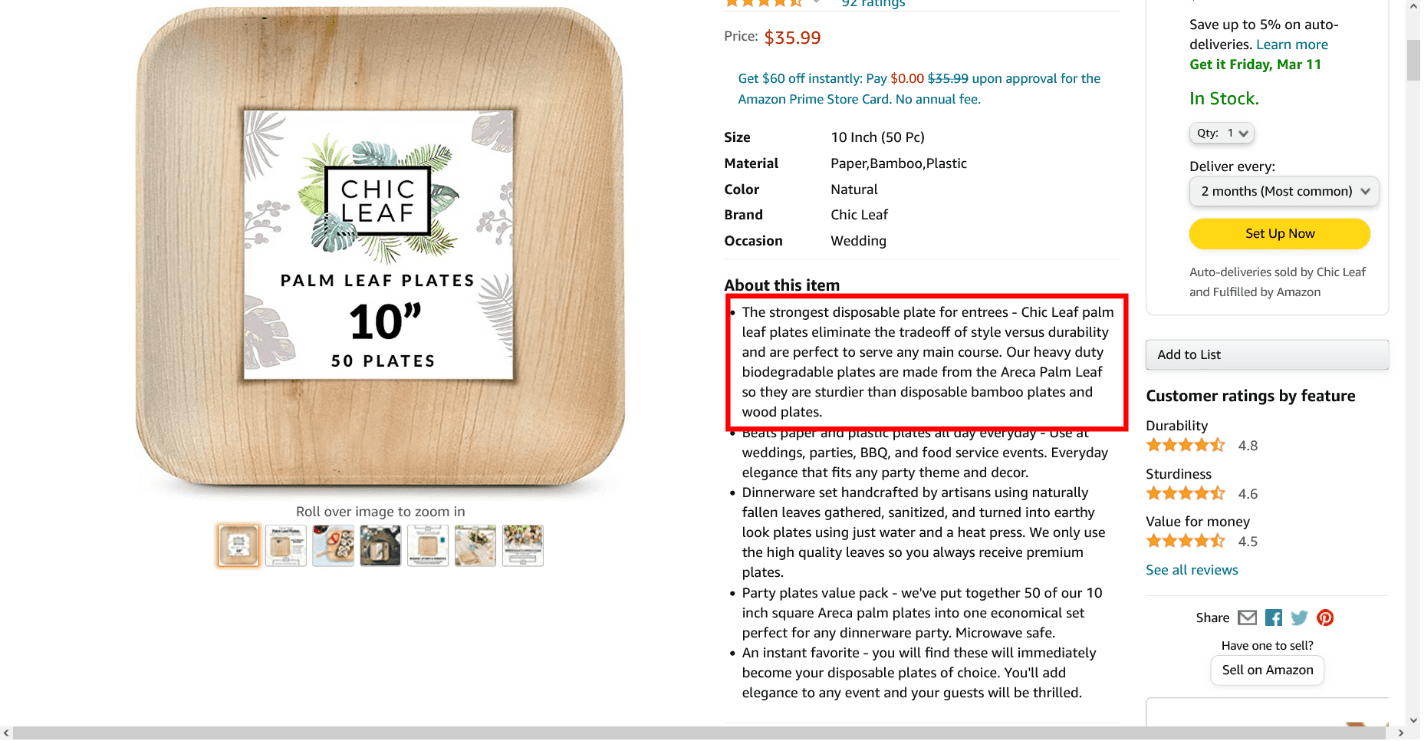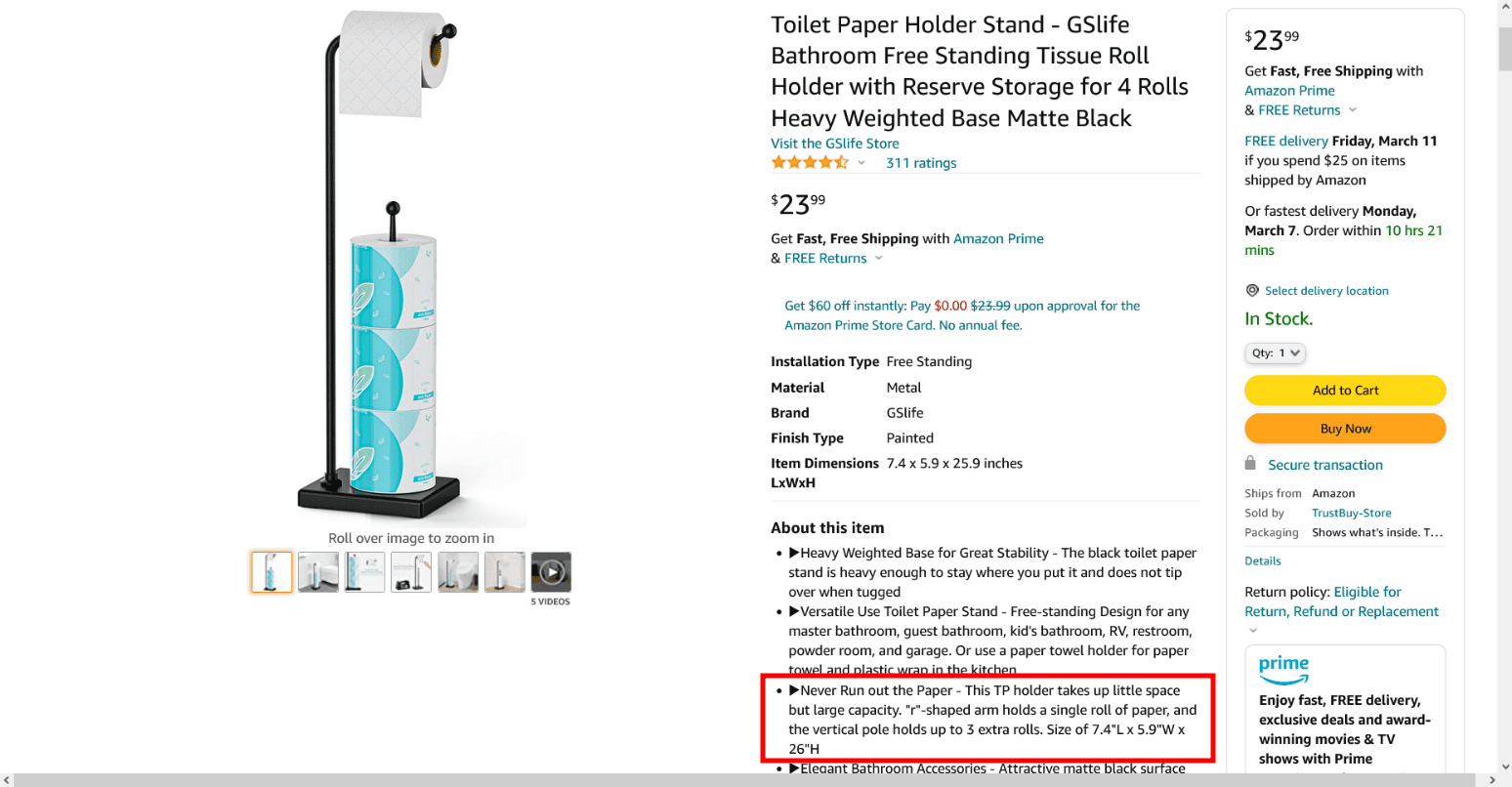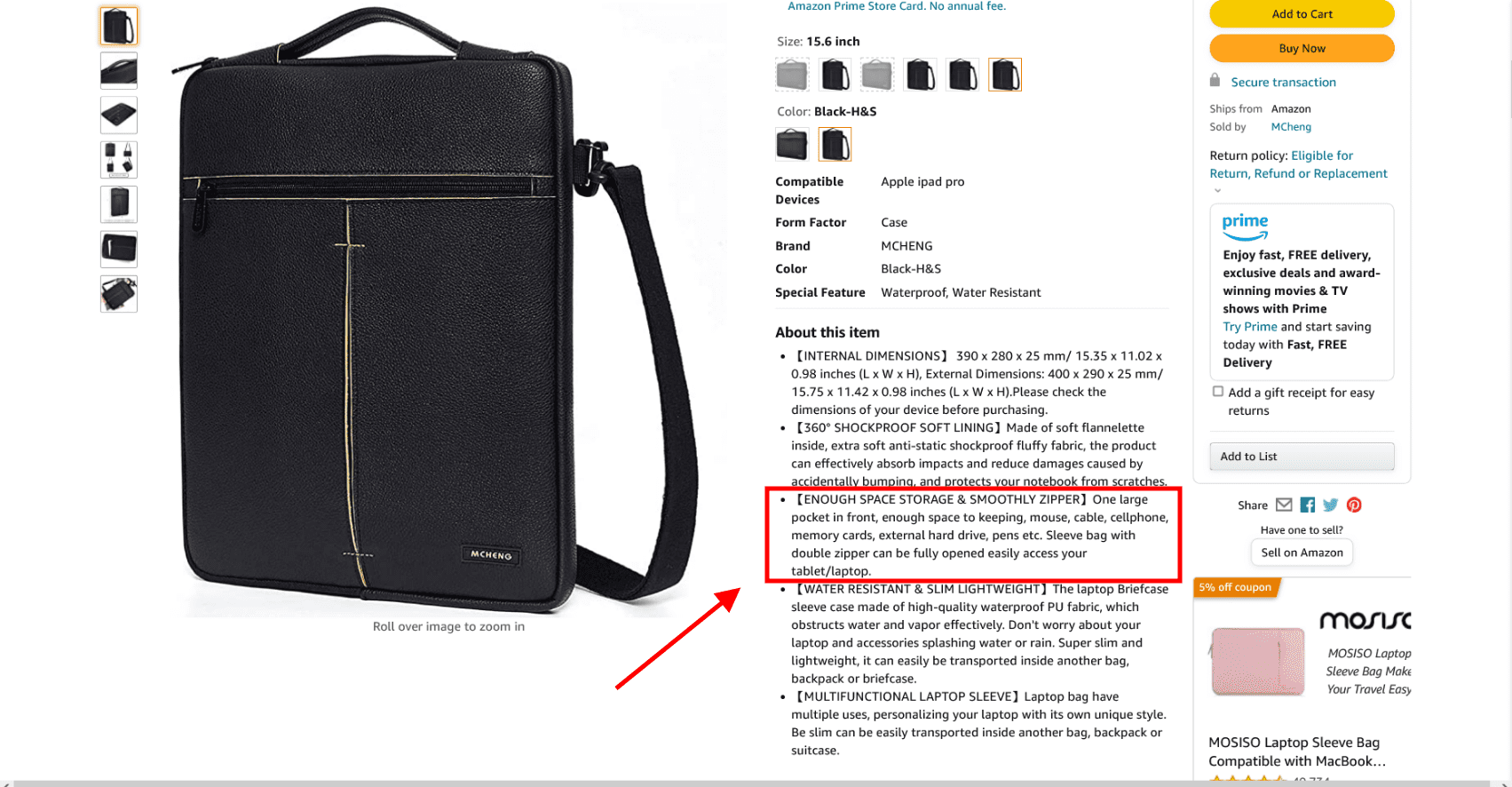6 Tips for Writing Powerful Amazon Listing Bullet Points

When you’re putting together your Amazon product listing, one of the main places you’re able to explain your product features and benefits is the bullet points.
Some would say the bullet points are more important than the product description because the placement of the bullet points is much higher up the product page and more prominent. Additionally, the bulleted list format makes it easier to read.
Regardless of which is more important, your bullet points can play a role in a customer finalizing their purchase. That’s why you want to use solid copywriting principles to ensure you’re maximizing the space that Amazon gives you.
In today’s article, we’re going to cover 7 tips for writing powerful Amazon bullet points using some of the “psychological triggers” that A-list copywriter, Joe Sugarman talks about in his book “The Copywriter’s Handbook.”
Tip #1 – Emphasize simplicity.
One of the main drives humans have is to conserve energy. What’s the best way to do that? Simplicity.
Humans love simplicity, and the more you can emphasize how simple your product is, the better.
Simplicity is one of the main reasons why Amazon has become the behemoth they are today. They’ve heavily simplified the online shopping experience with features like Same-Day Shipping and One-Click Purchases.
Here are a few ways you might emphasize simplicity:
-
If your product reduces the number of things a customer has to do to achieve an objective, that’s a great thing to call out. For example, some insulated coffee mugs have multiple pieces that you have to assemble to make the unit insulated. If you sell an insulated coffee mug that only requires one lid, that might be something to call out.
-
If your product reduces the number of things a customer has to purchase to achieve an objective, that’s a great thing to call out too. For instance, if you sell a set or a kit of some kind, you would want to emphasize that this single purchase has everything the shopper needs and prevents the shopper from having to shop around.
Tip #2 – Establish authority.
In a marketplace setting, customers can easily get distracted and start shopping for other products. One great way to keep them on your listing is to establish your authority in the market.
Here are a few ways you might emphasize authority:
-
If you’ve been in the market for a while, you might discuss how long you’ve been producing the product. Shoppers will assume that if you’ve been producing your product for a while, you’ve ironed out the kinks and likely produce a high-quality product—because if you didn’t, you would still be here. At least that’s the train of thought.
-
If you’ve added something to your product that your competitors don’t have, this is a great piece of information to include in your bullets. Remember, differentiation is a powerful frame you want to exploit when your competitors’ products are only a click or two away.
-
What have you done differently than your competitors?
-
What nagging features do other products have that yours doesn’t?
Tip #3 – Trigger the desire to belong.
Many listings don’t trigger the desire to belong. What Sugarman meant with this one is that people like to feel like they’re in an in-group.
If you can call out a character trait or identity that your target audience values, you create a mental link that your product can help them achieve that.
Here are a few ways you might trigger the desire to belong:
-
Tell your brand story. Especially if the founders or CEO holds the same roles or identity traits that your target audience currently holds or aspires to. For example, if a CEO is a veteran, you might call that out.
-
Create an “us versus them” dialog in your copy. For example, you might say, “Serious fitness enthusiasts know how important it is to have reversible grips.” This type of copy acts as an indirect differentiator. Sure, you might turn off a certain segment of people who don’t perceive themselves as serious fitness enthusiasts, but that’s okay because you want to develop a loyal customer base. Customers who don’t identify shouldn’t purchase.
Tip #4 – Be specific
One of the things customers look for on your listing is specifics. What are the dimensions of your product? What’s the color? They want to know if your product works for them.
Many sellers make it hard for customers to find this information.
Some leave it out altogether or only communicate that information in their product photos.
The product photos aren’t enough.
You never know what device someone is using, or what setting they’re in; they may not know to look for dimensions in a product photo. That’s why including these specifics, like dimensions and other product features, can help a customer confirm that your product is for them.
Here are a few ways you might be specific in your bullet points:
-
Include your product dimensions.
-
Include what settings or objectives your product is for. For example, for camping, school, apartments, etc.
-
Include who your product is for.
Tip #5 – Sense of ownership.
Depending on your product, creating a sense of ownership in your bullet copy can be a great motivating factor to purchase your product. This works well if your product has features that the consumer prides themself on, or if you donate a portion of proceeds to a cause.
Here are a few ways you might create a sense of ownership:
-
Emphasize how your manufacturing helps reduce waste.
-
Emphasize the recyclability of your product and how it contributes to lower pollution.
-
State that a portion of revenue is donated. Now, many brands do this but they make the statement incomplete. They don’t tell the prospect why the cause that they’re donating to matters. For instance, you might see “1% of proceeds go to saving the bees.” A statement like that is too vague. To make this type of bullet make an impact, you want to explain why the cause is important. An explanation also helps the shopper believe that your intentions are more honest.
Tip #6 – Justify the purchase
This tip is probably the most obvious, but you might be surprised at how uncommon it is. How do you justify the purchase? You remind the prospect of how much time and energy is saved by using your product.
Here are a few ways to justify a purchase in more detail:
-
Remind the prospect of how much energy is saved because your product doesn’t require purchasing other products.
-
Remind the prospect of much time they save because your product doesn’t require constant maintenance.
-
Remind the prospect of how convenient your product is because it can be used indoors and outdoors.
Wrapping Up
Optimizing your Amazon listing, specifically, your bullet points should be a routine practice, yet, many sellers don’t do this.
The reality is, as more competitors enter the market, and as your listing collects reviews, your bullet points should evolve.
You want to touch on the things that matter most to customers, which you find out through reviews and feedback.
In today’s article, we covered six psychological triggers that motivate prospects to buy. Set aside some time to look over your reviews and listing and see which of these triggers might help convert more shoppers.
Happy Selling,
The Page.One Team
The Last Word:
When you’re writing your bullet points, remember to lead with a benefit. Customers purchase products for outcomes. It’s not about the product. The benefit should come first, and the feature of the product that produces that benefit comes second.

